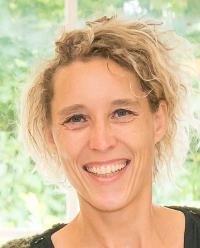Cookies
Van Hall Larenstein treats its customers' information with the utmost care and will never make this information available to third parties. Read more about us Privacy and Cookie Policy

This associate applied research group is focused on the safety, quality and integrity of the entire food chain, from crop production to processing, distribution and consumption. The group researches what happens to resources in the food chain and identifies potential health risks and risk-mitigation strategies. It also researches the integrity of food products (for fraud). The research uses and develops state-of-the-art techniques, including analytical chemical and chemometric techniques, physiologically based kinetic models (PBP) and in vitro technologies (kinetic and toxicity tests). The research carried out in this associate applied research group is multidisciplinary and contributes to a sustainable future for people and the environment. The associate applied research group works with research institutes and the private sector (multinationals and SMEs) and draws on input from students at Van Hall Larenstein University of Applied Sciences (HVHL) to turn research questions into applied scientific research.
Everything published by the associate applied research group on Safety in the Food Chain can be found on Greeni, the online library for the green universities of applied sciences.
Dr. Marije Strikwold ERT is an associate professor of Safety in the Food Chain at HVHL’s Applied Research Center. Marije studied environmental science and biomedical sciences and was awarded a PhD from Wageningen University’s toxicology department. She studies the risks and outcomes associated with chemical compounds in the food chain and researches the integrity of food products. Her research also looks into the development of alternatives to animal testing for assessing the risks associated with chemical compounds. As a lecturer, Marije is affiliated with HVHL’s study programme on forensic laboratory research, where her role includes coordinating the minor in Food Forensics & Toxicology. She has experience in developing and applying exposure-based and physiologically based kinetic (PBK) models, in vitro toxicity, ADME testing, and analytical chemical techniques. She has received three awards from the Society of Toxicology for her scientific publications on alternatives to animal testing. Marije is a EUROTOX registered toxicologist.

If you have any questions about the associate applied research group, please email [email protected] or call +31 6 2221 8304.